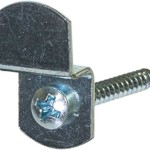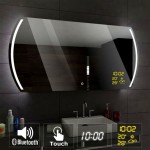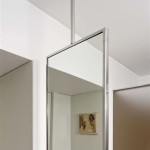How Do I Mirror My iPad To Smart TV Wirelessly?
Wirelessly mirroring an iPad to a smart TV offers a convenient way to share content, from presentations and photos to videos and games, on a larger screen. Several methods facilitate this wireless connection, each with its advantages and limitations. Whether using Apple's AirPlay technology or third-party screen mirroring apps, users can easily project their iPad's display onto compatible televisions.
Using AirPlay with an Apple TV or AirPlay 2-Compatible Smart TV
AirPlay is Apple's proprietary technology for wirelessly streaming audio and video content. The simplest and most reliable way to mirror an iPad to a TV is by using an Apple TV. Apple TV connects directly to the TV via HDMI and creates a wireless network that the iPad can connect to. For TVs with built-in AirPlay 2 support, an Apple TV isn't required, and the iPad can connect directly to the TV.
To mirror the iPad screen using AirPlay, both the iPad and the Apple TV (or AirPlay 2-compatible TV) must be connected to the same Wi-Fi network. Users can then swipe down from the top right corner of the iPad screen to open Control Center. Tap the "Screen Mirroring" icon and select the Apple TV or TV name from the list of available devices. The iPad screen will then be mirrored on the TV.
Disconnecting from AirPlay is equally straightforward. Open Control Center, tap "Screen Mirroring," and then select "Stop Mirroring."
Mirroring with Third-Party Screen Mirroring Apps
For users who don't have an Apple TV or an AirPlay 2-compatible smart TV, several third-party screen mirroring apps offer alternative solutions. These apps often support a wider range of smart TVs, including those from manufacturers like Samsung, LG, and Sony. They work by creating a virtual connection between the iPad and the TV, typically requiring both devices to be on the same Wi-Fi network.
The functionality and setup process for these apps can vary. Users should refer to the specific app's instructions for detailed guidance. Generally, the process involves downloading the app on both the iPad and the smart TV (if required). The app then guides the user through the pairing process, enabling screen mirroring.
It's important to note that the performance of third-party apps can be influenced by factors such as network congestion and the app's optimization. Some apps may introduce latency or experience occasional connection drops, particularly on less robust networks.
Troubleshooting Common Mirroring Issues
Occasionally, users may encounter issues when attempting to mirror their iPad to a smart TV wirelessly. Several troubleshooting steps can help resolve common problems.
First, ensure that both the iPad and the TV are connected to the same Wi-Fi network. Check the network strength and consider restarting the router if connectivity issues are suspected. If using AirPlay, ensure that the Apple TV or AirPlay 2-compatible TV is turned on and properly connected to the TV.
For third-party apps, verify that the app is up-to-date on both the iPad and the TV. Check the app's settings to ensure that mirroring is enabled. If problems persist, consult the app's support documentation or contact the app developer for assistance.
Restarting both the iPad and the TV can sometimes resolve software-related glitches that may be interfering with the mirroring process. If none of these troubleshooting steps resolve the issue, checking the manufacturer's support website for the TV or contacting their support team may provide further assistance.
Factors Affecting Mirroring Performance
Several factors can impact the quality and stability of wireless screen mirroring. A strong and stable Wi-Fi network is crucial. Network congestion, caused by multiple devices using the same network simultaneously, can lead to lag or dropped connections.
The distance between the iPad and the TV can also play a role. Greater distances can weaken the wireless signal and impact performance. Obstacles, such as walls, can further impede the signal. Positioning the router for optimal signal strength can improve mirroring quality.
The software versions of both the iPad and the TV can also affect performance. Keeping both devices updated with the latest software versions ensures compatibility and can address known bugs that may impact mirroring functionality.
Choosing the Right Mirroring Method
The optimal mirroring method depends on individual needs and available equipment. AirPlay, through an Apple TV or AirPlay 2-compatible TV, offers the most seamless and reliable experience within the Apple ecosystem. It provides high-quality streaming and low latency, ideal for activities like gaming and presentations.
Third-party mirroring apps provide broader compatibility with different smart TV brands, offering a viable solution for users without Apple TVs. However, the performance of these apps can vary, and users should carefully consider factors such as network stability and app reviews when selecting an app.

How To Connect An Ipad A Tv Or Display Airplay Adapter

Big Screen Viewing How To Connect Your Iphone Or Ipad Tv

Ipad Screen Mirroring Not Working Quick Solutions Here

How To Screen Mirror Your Ipad A Samsung Tv

Top 3 Ways On How To Connect And Mirror Ipad Vizio Tv

Top 4 Methods To Mirror Ipad Samsung Tv

Best Ways To Mirror Ipad Samsung Tv

How To Mirror An Ipad A Samsung Tv

How To Connect An Ipad A Samsung Tv Wirelessly

How To Mirror Ipad Iphone Samsung Tv








